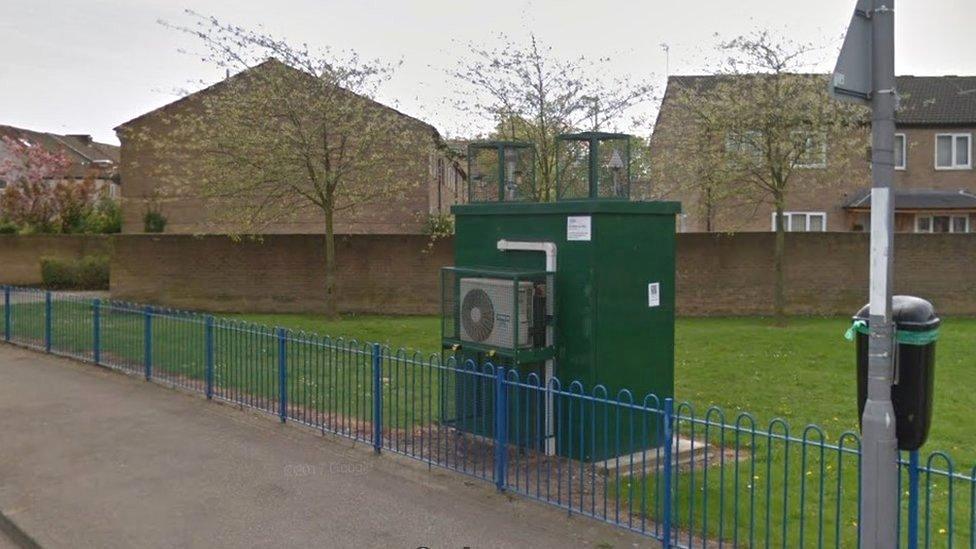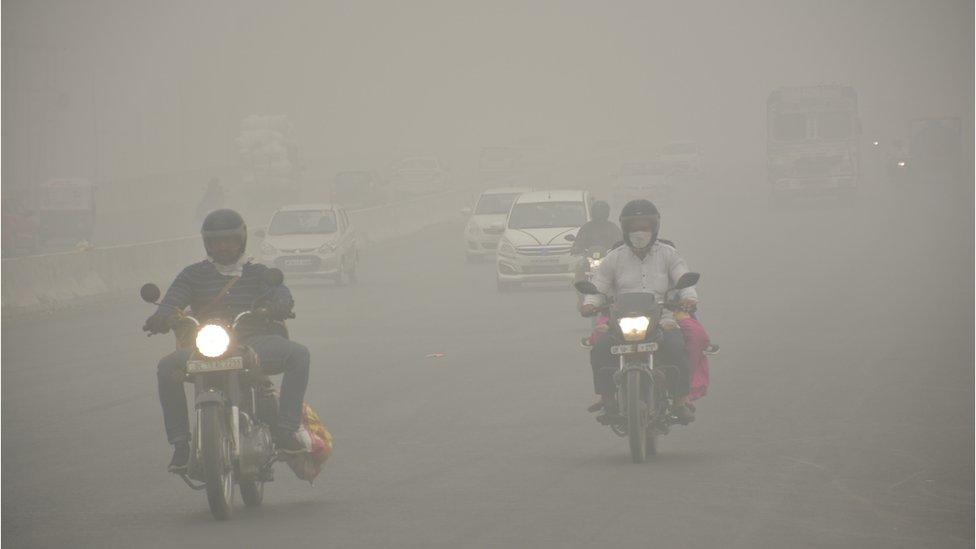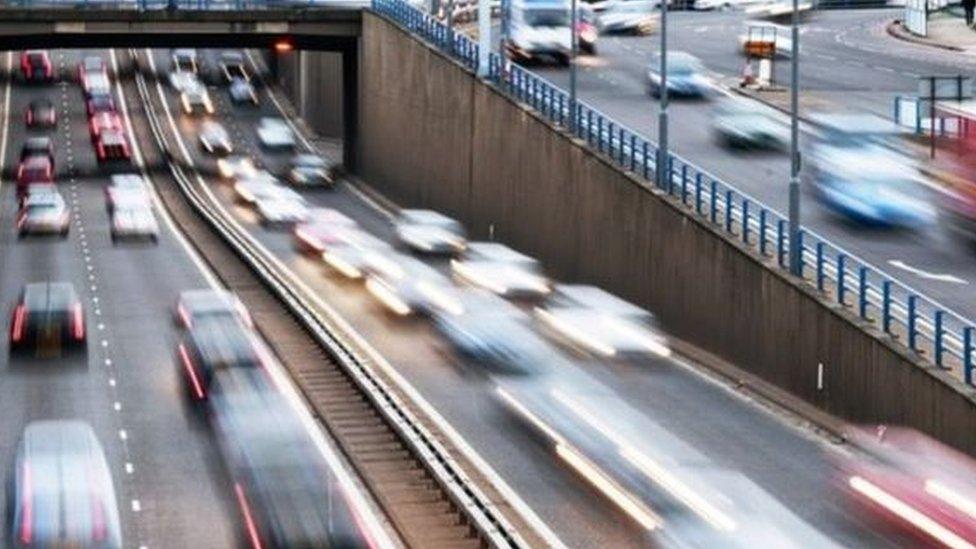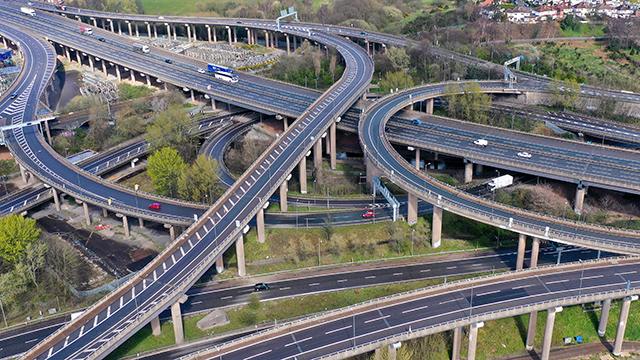Coronavirus: Teesside 'smoggie' pollution halves during lockdown
- Published

This meter showed NO2 levels had halved since the same time last year
A region where residents are nicknamed "smoggies" because of historical pollution rates has seen levels halve during the coronavirus lockdown.
Meters on Teesside recorded reductions in nitrogen dioxide (NO2) released from car exhausts of between 32% and 52% after non-essential trips were banned.
A Stockton device showed levels were now less than half of last year's.
Stockton Council leader Bob Cook said it raised questions about how to keep pollution down after the crisis ends.
"A big factor in the improvements we are seeing in air quality is the huge reduction in traffic and we can all think about how we can sustain these changes when the Covid-19 restrictions in place are lifted," he said.
"Things like walking, cycling, or using public transport to get around the borough would help to keep those levels low and help us all keep active."

A SIMPLE GUIDE: How do I protect myself?
AVOIDING CONTACT: The rules on self-isolation and exercise
HOPE AND LOSS: Your coronavirus stories
PUBLIC TRANSPORT: Is it safe to travel?
MORE OF YOUR QUESTIONS: Answers on pregnancy, pets and home visitors

The BBC Shared Data Unit compared government data from readings taken between 23 March and 19 April last year and 25 March and 21 April this year.
A meter in Eaglescliffe recorded a 42.6% drop in NO2 while one in Breckon Hill in Middlesbrough showed a 47.6% fall.
The least reduction was found at a device off Cowpen Lane, near Billingham railway station, which was still down by almost a third with 32.8% less NO2, the Local Democracy Reporting Service said.
- Published20 April 2020

- Published8 April 2020

- Published31 March 2020
